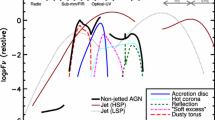Abstract
It has been known for over 50 years that the radio emission from shell supernova remnants (SNRs) indicates the presence of electrons with energies in the GeV range emitting synchrotron radiation. The discovery of nonthermal X-ray emission from supernova remnants is now 30 years old, and its interpretation as the extension of the radio synchrotron spectrum requires electrons with energies of up to 100 TeV. SNRs are now detected at GeV and TeV photon energies as well. Strong suggestions of the presence of energetic ions exist, but conclusive evidence remains elusive. Several arguments suggest that magnetic fields in SNRs are amplified by orders of magnitude from their values in the ambient interstellar medium. Supernova remnants are thus an excellent laboratory in which to study processes taking place in very high Mach-number shocks. I review the observations of high-energy emission from SNRs, and the theoretical framework in which those observations are interpreted.
Similar content being viewed by others
References
Allen, G.E., Gotthelf, E.V., Petre, R.: In: Proc. 26th ICRC, vol. 3, p. 480 (1999)
Aschenbach, B.: Nature 396, 141 (1998)
Bamba, A., et al.: Astrophys. J. 589, 827 (2003)
Baring, M.G., et al.: Astrophys. J. 513, 311 (1999)
Becker, R.H., et al.: Astrophys. J. 240, L33 (1980)
Bell, A.R.: Mon. Not. R. Astron. Soc. 182, 147 (1978)
Bell, A.R.: Mon. Not. R. Astron. Soc. 353, 550 (2004)
Berezhko, E.G., Völk, H.: Astron. Astrophys. 451, 981 (2006)
Blandford, R.D., Eichler, D.: Phys. Rep. 154, 1 (1987)
Borkowski, K.J., et al.: Astrophys. J. 724, L161 (2010)
Bykov, A.M., et al.: Astrophys. J. 689, L133 (2008)
Chevalier, R.A.: Nature 266, 701 (1977)
Cowsik, R., Sarkar, S.: Mon. Not. R. Astron. Soc. 191, 855 (1980)
Ellison, D.C., et al.: Astrophys. J. 712, 287 (2010)
Galas, C.M.F., Venkatesan, D., Garmire, G.: Astrophys. Lett. 22, 103 (1982)
Green, D.A.: A Catalogue of Galactic Supernova Remnants (2009 March version). Astrophysics Group, Cavendish Laboratory, Cambridge, UK (2009)
Hubble, E.: Astr. Soc. Pacific Leaflet #14 (1928)
Jun, B.-I., Jones, T.W., Norman, M.L.: Astrophys. J. 468, L59 (1996)
Kalemci, E., et al.: Astrophys. J. 644, 274 (2006)
Koyama, K., et al.: Nature 378, 255 (1995)
Laming, J.M.: Astrophys. J. 499, 309 (1998)
Long, K.S., et al.: Astrophys. J. 586, 1162 (2003)
Minkowski, R.: In: van de Hulst, H.C. (ed.) Proc. IAU Symp. #4, p. 107. Cambridge University Press, Cambridge (1957)
Parizot, E., et al.: Astron. Astrophys. 453, 387 (2006)
Patnaude, D.J., Fesen, R.A.: Astron. J. 133, 147 (2007)
Pohl, M., et al.: Astrophys. J. 626, L101 (2005)
Reynolds, S.P.: Astrophys. J. 459, L13 (1996)
Reynolds, S.P.: Annu. Rev. Astron. Astrophys. 46, 89 (2008)
Reynolds, S.P., Chevalier, R.A.: Astrophys. J. 245, 912 (1981)
Reynolds, S.P., Ellison, D.C.: Astrophys. J. 399, L75 (1992)
Reynolds, S.P., Gilmore, D.M.: Astron. J. 106, 272 (1993)
Reynolds, S.P., Keohane, J.M.: 525, 368 (1999)
Reynolds, S.P., et al.: Astrophys. J. 680, L41 (2008)
Reynoso, E., et al.: Astrophys. J. 491, 816 (1997)
Shklovskii, I.S.: Dokl. Akad. Nauk SSSR 91, 475 (1953)
Slane, P.O., et al.: Astrophys. J. 525, 357 (1999)
Slane, P.O., et al.: Astrophys. J. 548, 814 (2001)
Toor, A.: Astron. Astrophys. 85, 184 (1980)
Uchiyama, Y., et al.: Nature 449, 576 (2007)
Vink, J., Laming, J.M.: Astrophys. J. 584, 758 (2003)
Weiler, K.W., et al.: AIP Conf. Proc. 1111, 440 (2009)
Willett, R.: In: Babu, G.J., Feigelson, E.D. (eds.) Statistical Challenges in Modern Astronomy IV. APS Conf. Ser., vol. 371, p. 247 (2007)
Author information
Authors and Affiliations
Corresponding author
Rights and permissions
About this article
Cite this article
Reynolds, S.P. Particle acceleration in supernova-remnant shocks. Astrophys Space Sci 336, 257–262 (2011). https://doi.org/10.1007/s10509-010-0559-8
Received:
Accepted:
Published:
Issue Date:
DOI: https://doi.org/10.1007/s10509-010-0559-8




